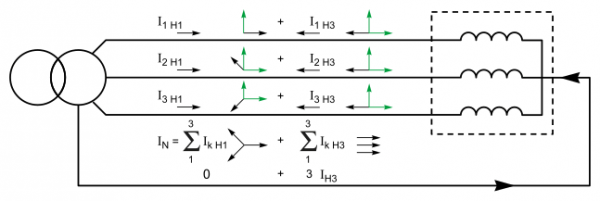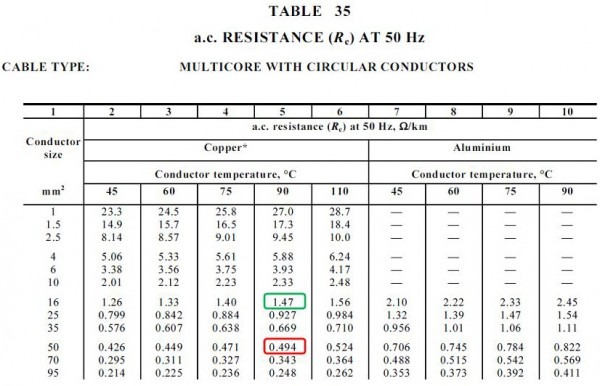Sizing The Neutral Conductor
Have you ever wondered what the neutral conductor does in an electrical system? Sizing the neutral conductor can be a complicated process that involves many factors, such as the type and size of wire being used, the amount of current flowing through the system, and the overall design of the system. Understanding the basics of sizing the neutral conductor can help prevent electrical issues and keep your system operating safely and efficiently.
When it comes to sizing the neutral conductor, there are several pain points that often come up. These can include issues with power quality, such as voltage drops and harmonics, as well as safety concerns related to overloading wires or using the wrong size wire. Additionally, improper sizing of the neutral conductor can lead to issues with grounding, which can cause a host of problems for your electrical system.
The main target of sizing the neutral conductor is to ensure that the wire can safely carry the current without overheating or causing other issues. This means taking into account not just the amount of current that will be flowing through the system, but also the voltage and resistance of the wire itself. Other factors that come into play include the length of the wire run, the type of load being served, and any potential harmonic distortion that may occur.
In summary, sizing the neutral conductor is a critical part of any electrical system that must be done carefully and thoughtfully. By taking into account all of the relevant factors, you can ensure that your system operates efficiently and safely, without any unnecessary downtime or safety issues.
Sizing the Neutral Conductor: Understanding the Basics
When I first started working with electrical systems, I quickly learned how important it was to properly size the neutral conductor. Early on, I made the mistake of using the wrong size wire and ended up causing a voltage drop that resulted in a major system failure. Since then, I've learned a lot about the factors that go into sizing the neutral conductor and how to avoid common mistakes.
At its most basic level, sizing the neutral conductor involves determining the appropriate wire size based on the amount of current that will be flowing through the system. This means taking into account the distance between the source and the load, as well as the size and type of load being served. In addition, it is important to consider any potential harmonic distortion that may be present in the system, as well as the overall voltage and current levels.
One of the most important factors in sizing the neutral conductor is ensuring that it can handle the amount of current that will be flowing through it without overheating. This means using a wire of sufficient size that can handle the current load, as well as considering any voltage drops or other factors that may occur over the length of the wire run.
The Importance of Proper Neutral Conductor Sizing for Safety
Safety is always a top priority when it comes to electrical systems, and sizing the neutral conductor is no exception. Improper sizing of the neutral conductor can result in serious safety issues, including overloaded wires that can lead to fires or other hazards. In addition, using the wrong size wire can lead to problems with grounding, which can cause issues with electrical shock, electrocution, and other hazards.
When it comes to designing an electrical system, it is important to take into account all of the relevant safety factors, including proper sizing of the neutral conductor. By doing so, you can help ensure that your system runs safely and efficiently, without any unexpected issues or hazards.
Factors to Consider When Sizing the Neutral Conductor
When sizing the neutral conductor, there are several factors to keep in mind. These can include the type and size of wire being used, the amount of current flowing through the system, any potential voltage drops or harmonic distortion that may be present, and the overall design and configuration of the system.
In addition, it is important to consider any safety factors that may apply, such as grounding and other electrical hazards. By taking a holistic approach to sizing the neutral conductor, you can help ensure that your system operates safely and efficiently, without any unnecessary downtime or safety issues.
Common Mistakes to Avoid When Sizing the Neutral Conductor
There are several common mistakes that can occur when sizing the neutral conductor. These can include using the wrong size wire, failing to take into account voltage drops or harmonic distortion, and neglecting to consider overall system design and configuration.
To avoid these mistakes, it is important to take a careful and thoughtful approach to sizing the neutral conductor, and to consider all relevant factors before making any decisions. By doing so, you can help ensure that your system operates safely and efficiently, without any unexpected issues or hazards.
Question and Answer
Q: What is the purpose of the neutral conductor in an electrical system?
A: The neutral conductor serves as a return path for current in an electrical system, allowing for safe and efficient operation of the system.
Q: How do you determine the appropriate size for the neutral conductor in a system?
A: The appropriate size for the neutral conductor depends on several factors, including the amount of current flowing through the system, the type and size of wire being used, and any potential harmonic distortion that may be present. In general, it is important to carefully consider all relevant factors before making any decisions about wire size and configuration.
Q: What are some common mistakes to avoid when sizing the neutral conductor?
A: Some common mistakes when sizing the neutral conductor include using the wrong size wire, failing to consider voltage drops or harmonic distortion, and neglecting overall system design and configuration. To avoid these mistakes, it is important to take a careful and thoughtful approach to sizing the neutral conductor, and to consider all relevant factors before making any decisions.
Q: What are some safety concerns related to improper sizing of the neutral conductor?
A: Improper sizing of the neutral conductor can lead to serious safety issues, including overloaded wires that can lead to fires or other hazards, as well as problems with grounding that can cause electrical shock or other hazards.
Conclusion
Sizing the neutral conductor is a critical part of any electrical system, and must be done with care and attention to detail in order to ensure that the system operates safely and efficiently. By taking into account all relevant factors, from the amount of current flowing through the system to the configuration of the wire run and the potential for harmonic distortion, you can ensure that your system runs smoothly without any unexpected issues or hazards.
Gallery
Neutral Wire Size Calculator

Photo Credit by: bing.com /
(PDF) Neutral Conductor Size Selection For Balanced And Harmonic

Photo Credit by: bing.com / neutral size conductor selection harmonic infested balanced electrical system pdf
Neutral Wire Size Calculator

Photo Credit by: bing.com /
Neutral Sizing Part 2 - YouTube

Photo Credit by: bing.com / neutral sizing
Sizing And Protection Of The Neutral Conductor (2) | EEP
Photo Credit by: bing.com / neutral conductor sizing protection
0 Response to "Sizing The Neutral Conductor"
Posting Komentar